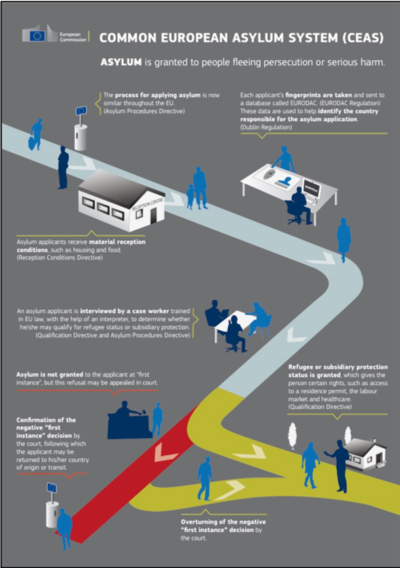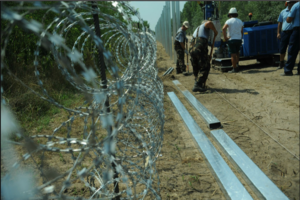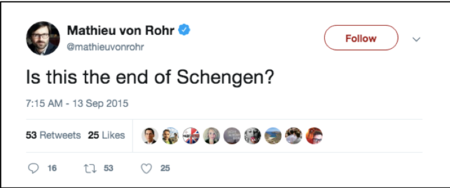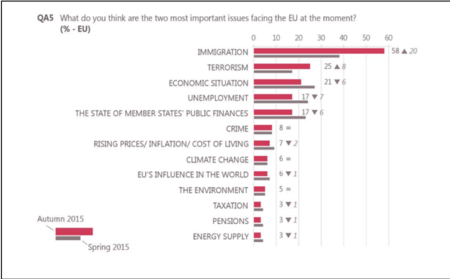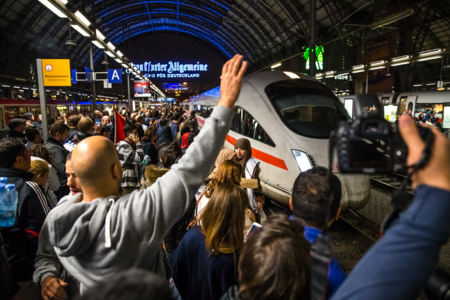Documentation:Open Case Studies/SPPGA/The 2015 European Refugee Crisis
Context
In 2015, a record 1,005,504 asylum seekers and migrants reached Europe in search of security and a better future. (For definitions of refugee, asylum seeker and migrant see here).That same year, almost 4,000 people went missing in the trajectory to Europe, with many presumed to have drowned in the Mediterranean. Fifty percent of people came from Syria, followed by Afghanistan and Iraq. Most people landed on the shores of Italy and Greece, while others trekked from Turkey, through the Balkan states, into Hungary. The majority of refugees and migrants aimed to go to northern and western Europe, particularly Germany and Sweden, where reception and support facilities were deemed to be better. These countries were already home to family and community members of the countries of origin, which asylum seekers hoped would facilitate integration.
New Pathways
The uptick in people arriving in Europe was due to several factors. After four years of a brutal civil war, many Syrians felt they could no longer risk their lives in the country. Turkey, Lebanon and Jordan, which by then already hosted four million Syrian refugees, were not ideal options given limited work, education and housing opportunities. The situations in Afghanistan and Iraq were also becoming untenable as extremist groups such as the Taliban and Islamic State strengthened their grips on parts of the countries. In addition, political and social instability in Libya opened the door to increased human trafficking towards Europe.
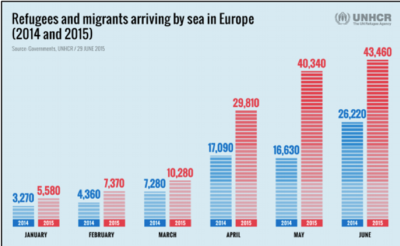

Concurrently, routes to Western Europe via the Balkans were also becoming a viable option: they were cheaper and came recommended by smugglers paid to get people into Europe. This did not result in a rerouting of people, but rather an increase in the number of travellers via the various routes. Another factor that increased the number of migrants and refugees was Germany’s announcement on August 21 2015 that it would suspend the Dublin Regulation for Syrian asylum seekers in Germany. This meant people could claim asylum in Germany, as opposed to in the country where they first reached Europe (more on the EU’s asylum policies below).
Increased Arrivals
Increased numbers of refugees and migrants had been arriving at Europe’s Mediterranean coast since 2014. In fact, between 2013 and 2014, the number of people arriving by sea increased from 60,000 to 219,000 (a 265% increase). In 2014, more than three quarters of people arrived in Italy. These trends changed in 2015, when more and more people traveled via the eastern Mediterranean route and arrived in Greece, making it the top destination for migrants and refugees. In 2015, over 100,000 people arrived in Hungary, many of them aiming to trek west to Germany (see map above).
Deaths at Sea
Between January and April 2015, 900 people had already died trying to cross the Mediterranean in hopes of arriving in Europe. On April 19 2015, a boat from Libya carrying some 900 migrants and refugees capsized off the island of Lampedusa, Italy. At least 800 people died, making it one of the deadliest tragedies on the Mediterranean that year.
All Eyes on Europe: The Media Responds
Media attention on the situation began to increase in 2015. After the Lampedusa shipwreck, organizations such as the UN Refugee Agency and Human Rights Watch, which had already been calling for Europeans to take action, stepped up their advocacy. The drownings in the Mediterranean began to be seen by the media and the general public as a humanitarian emergency (see headlines from CNN, Vox, and Foreign Policy). Loris de Filippi, President of Medecins Sans Frontieres, noted “A mass grave is being created in the Mediterranean Sea and European policies are responsible.”
The situation on the mainland was increasingly dire, as refugees and migrants were forced to live in undignified detention camps or on the street. The UN, Human Rights Watch and other organizations demanded that Greece stop its inhumane and prolonged detention of refugees and migrants in deficient detention centres, stepping up advocacy after the apparent suicide of a Pakistani man at a detention centre in February.
As the summer months brought improved sailing conditions on the Mediterranean sea, it was likely that sea arrivals would increase (as they did in June to September 2014). Given the number of fatalities on the Mediterranean, increased pressure from media and non-governmental organizations, and lacking reception capacities in Italy and Greece, the European Commission acted to find a solution to the problem quickly.
The European Asylum System Prior to 2015
All members of the EU are party to the 1951 Refugee Convention as well as its 1967 Protocol. These instruments define what constitutes a refugee as well as describe a state’s responsibilities in providing international protection. Several important principles underpin the Convention, including non-penalization, non-refoulement, and non-discrimination. Further, article 18 of the Charter of Fundamental Rights of the European Union lists the right to asylum as a fundamental right.
The legislative framework corresponding to asylum seekers in the European Union is the Common European Asylum System (CEAS). CEAS was established to ensure fairness, effectiveness and coherence in asylum procedures among EU member states. Given the lack of borders and focus on freedom of movement that underlie the EU, developing a collaborative approach to migration and asylum was critical to the effective functioning of the policy.
The first phase of the creation of CEAS took place between 1999 and 2005. Several policies were developed to ensure the harmonization of legal frameworks among Member States. These policies include the European Refugee Fund and the Family Reunification Directive.
The second phase of CEAS development took place after a period of consultation with relevant stakeholders and an evaluation of previous policies. The European Commission utilized the results from this reflection as the basis for the Policy Plan on Asylum, which it presented in June 2008. This policy plan set the workplan for further development of CEAS. Some of the overarching goals of the plan include:
- the provision of a common asylum procedure
- establishing uniform statuses for asylum and subsidiary protection
- determining responsibility and support solidarity among Member States
The Dublin System
An important component of CEAS is the Dublin III Regulation. Originally established as the Dublin Convention in 1990 and subsequently replaced by the Dublin III Regulation in 2013, this law determines which Member State is responsible for evaluating an asylum application and, consequently, which state is responsible for supporting said refugee. Specifically, it states that people seeking asylum must present their claim in the first European country in which they arrive.
There are discretionary clauses that allow countries to examine asylum applications even if they are not meant to under the regulation. The “sovereignty clause” allows a country to take responsibility for an application on humanitarian grounds such as the health of the applicant, or for cost effectiveness reasons, among others. The “humanitarian clause” allows countries to examine applications for reasons such as family reunification. A system of transfers permits countries to transfer applicants to other countries for asylum examination under this scheme.
The regulation is meant to guarantee a more thorough evaluation of claims and prevent individuals from claiming asylum in several EU countries at once. Additionally, this law is supposed to prevent “asylum shopping”, or having individuals seek asylum in certain countries of their choice.
The Policy Challenges
Problems with the Dublin System
The Dublin system was plagued by problems long before the events of 2015. Several studies point at divergences in the ways in which member states applied the regulations, resulting in asylum seekers being deprived of access to fair and efficient asylum procedures. The discretionary clauses described above are rarely applied and some Member States, such as Bulgaria, have procedural restrictions for the application of the sovereignty clause. Likewise, recognition rates between countries varied widely. For example, in 2014 Sweden recognized 100% of Syrian refugee claims, the UK recognized 89% and Slovakia 43%. This data gives little evidence of a common, harmonized asylum policy.
The Dublin Regulation did not work as originally envisaged for several reasons. Having asylum seekers register their claim in frontline countries such Italy and Hungary places inordinate burdens on these countries. So while the policy assigned obligation it did not promote responsibility sharing and solidarity among Member States, contrary to what CEAS aimed to bring about. The regulation was also inefficient. For example, in 2013 more than a third of people in Europe made asylum claims in two or more European countries. This statistic shows another problem with the policy: it ignores people’s own preferences for where they seek asylum.
Having never before experienced such a large inflow of people, the European asylum system was put to the test, revealing significant deficiencies. In 2015 strong calls for changing the Dublin system were being made throughout the EU. The Parliamentary Assembly of the Council of Europe declared the Dublin system to be “dysfunctional and ineffective and should be urgently reformed to ensure ‘equitable burden sharing’ among member States.”
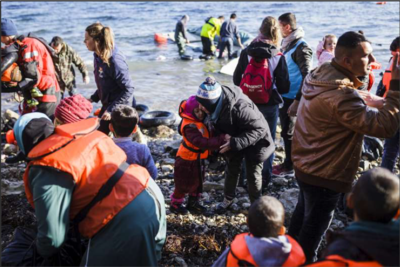
As the events of 2014 and 2015 unfolded, it became clear that the Dublin Regulation could not manage large inflows of people in a fair and effective way, leading to the corrosion of the European asylum system and human rights violations.
The Policy Responses
The European Agenda on Migration
On April 23, 2015 a meeting between Foreign Ministers and Interior Ministers took place in Luxembourg to discuss the refugee crisis. Though this meeting had been planned since March, it was all too fitting that it took place one day after the shipwreck off Lampedusa. During the meeting, leaders produced a 10 point action plan to immediately address the crisis in the Mediterranean. These actions included efforts to destroy boats used by smugglers, reinforcing joint operations in the Mediterranean, and an EU-wide voluntary resettlement mechanism for refugees.
“The 10 actions we have agreed upon today are the direct, substantial measures we will take to make an immediate difference. All of these actions require our common effort, the European institutions and the 28 Member States”, jointly stated High Representative/Vice-President Federica Mogherini and Commissioner Dimitris Avramopoulos.
On May 13, the Commission adopted the European Agenda on Migration, a political document that set out a series of steps the EU would take to “build up a coherent and comprehensive approach to reap the benefits and address the challenges deriving from migration” (pg. 2). It described various immediate measures to mitigate the crisis and improve migration policy in the medium and long term. Acknowledging the fragmentation of CEAS as a result of mistrust between Member States, the Agenda included the formation of a new monitoring process to ensure implementation of asylum rules and to bring about trust.
The document highlighted the need for shared responsibility among Member States and called for better management of migration policy. Importantly, the Agenda proposed mandatory quotas for the relocation of asylum seekers to Member States, a temporary derogation from the Dublin system. This meant proposing the Council of the European Union trigger Article 78(3) of the Treaty on the Functioning of the European Union, which allows for “provisional measures” in the event that one or more Member States are affected by the sudden arrival of third country nationals.
The quotas per country were to be based on factors such as GDP, population size, and unemployment. The number of people to be relocated from Greece and Italy would be specified to 40,000 at a follow-up announcement on the agenda’s implementation two weeks later. An additional 20,000 refugees outside of the EU would also be distributed throughout Europe.
During the press conference to announce the agenda Federica Mogherini, High Representative leading the European External Action Service and Vice President of the European Commission, highlighted the collaborative, integrated nature of the new plan: “The response is finally European. And it is also (…) a comprehensive response means that it tackles all different aspects of a problem that is complex, is not going to be solved from today to tomorrow but we have a set of European policies that can be put together, and we are doing that in an integrated and coordinated way…finally we don’t have a European response but we have an integrated European response,” (see video below).
A Second Plan for Relocation
As the conflict in Syria worsened over the summer months and ever increasing numbers of people arrived in Europe, in September 2015 the Council made the decision to add another 120,000 people for relocation from Italy and Greece. Interestingly Hungary, which had also seen a significant influx of people, was originally included as a beneficiary in the scheme. However, it refused to be part of it because it did not see itself as a frontline country (Prime Minister Viktor Orban argued that most people arriving in Hungary had already travelled through Greece). In addition, Hungary did not want to have to register and distribute thousands of people, effectively becoming an “EU refugee camp”- something Italy and Greece would eventually see on their soils.
In its decision, the Council highlighted that personal characteristics of asylum seekers such as family and cultural ties should be taken into account when making relocation verdicts (another welcome change from the structure of the Dublin Regulation). Although the relocation scheme announced in May was voluntary in nature, this second one was legally binding for all Member States.
Unfortunately, calls for action by the Commission were quickly met with resistance by various Member States, decreasing the effectiveness of the agenda. As one unnamed ambassador to the EU said to the news magazine Der Spiegel in June 2015, "From today's perspective, the agenda was dead an hour after it was born."
In particular, there was pushback against the quotas, which had been presented as a “voluntary pilot project” in the 10 point action plan. Eastern and central European countries such as Hungary, Czech Republic and Poland announced that they would refuse mandatory quotas, quoting an affront to their sovereignty. Slovakia filed a lawsuit against the quota system, with Prime Minister Fico calling the quotas “nonsensical and technically impossible.” By December 2015, only 130 and 54 asylum seekers from Italy and Greece, respectively, had been relocated to other countries. At the pace of transfers shown in the first five months since the relocation announcement by the Commission, it would take more than 750 years to relocate the 160,000 asylum seekers in Italy and Greece, according to the New York Times.
The slow progress on Council Decisions was indicative of the low level of implementation and transposition of asylum policy formulated at the EU-level. According to the Centre for European Policy Studies, a think tank, this is due to lacking legislative reforms related to EU legal acts as well as poor administrative and judicial capacities among certain member states (especially in relation to asylum policy). Although the Commission announced that it would more effectively guarantee the enforcement and implementation of EU legislation, actions by some Member States continued to show certain opposition to centrally mandated policy. Frans Timmermans, First Vice President of the European Commission 2014-2019 pointed out on the magazine Foreign Policy, “It ain’t rocket science. To analyze the problem is not that difficult, and to also point to solutions isn’t even that difficult. The difficulty is to get member states to come together on those solutions.” Without coherent collaboration among states, it was gradually evident that European leaders would have to make an alternative decision to address the crisis.
Divergent Views and Actions Among Member States
As hundreds of thousands of people arrived in the EU, anti-immigration sentiment in many parts of the region grew. While some Member States called for solidarity and human rights, others called for sovereignty and greater border control. At stake was the unity of the European alliance.
On August 21, after the number of people arriving in Europe reached record levels in July, Germany’s Federal Office of Migration and Exiles announced that it would suspend the Dublin Regulation for Syrians, thereby allowing people to claim asylum there instead of at their first port of entry. This was meant to ease the situation for border countries like Hungary and Greece, which were overburdened with daily arrivals. The EU Commission welcomed the move, calling it an act of solidarity. The country expected up to 800,000 people to arrive that year.
In September, France and Britain also announced plans to take in refugees and migrants. France said it would welcome 24,000 people between 2015 and 2017, while Prime Minister David Cameron said his country would accommodate 20,000 Syrian refugees between 2015 and 2020.
Still, other countries took different approaches. On June 23, Hungary announced that it would indefinitely suspend provisions of the Dublin regulation due to “technical reasons” and stop accepting asylum seekers transferred back from other countries. About 60,000 migrants and refugees had entered the country through Serbia that year and, as government spokesman Zoltan Kovacs noted, “the boat is full”. This announcement prompted the EU Commission to ask for “immediate clarification” of the technical reasons. One day later, Hungary reversed its decision and said it was only seeking a grace period to manage incoming asylum seekers.
Hungary once again made headlines in October erected a razor-wire fence along its border with Croatia. Having also sealed its border with Serbia, the country effectively blocked major entrances for refugees and migrants. Officials said they would instead direct people to Slovenia. The move was widely criticized by the EU Commission, Member States and the United Nations. Natasha Bertaud, a spokeswoman for the European Commission, said,“We have only just torn down walls in Europe; we should not be putting them up.”
Also in October, the UN High Commissioner for Human Rights, Zeid Ra’ad Al Hussein, urged the Czech Republic to stop detaining refugees and migrants in conditions described as inhumane. “According to credible reports from various sources, the violations of the human rights of migrants are neither isolated nor coincidental, but systematic: they appear to be an integral part of a policy by the Czech Government designed to deter migrants and refugees from entering the country or staying there,” Zeid said.
On September 13, less than one month after opening its doors, Germany imposed border restrictions with Austria as it tried to cope with huge influxes of people. Thomas de Maiziere, the Interior Minister, noted that the closure was in order to limit the number of people arriving in Germany and to address “urgent security reasons.” In this surprising about-face, Berlin seemed to once again support the Dublin system. This move also revoked the Schengen agreement, which includes free travel within the EU, prompting many to question the future of the union.
And so, as leaders struggled to cope, divisiveness grew and solidarity lessened, and migrants and refugees kept coming. To make matters worse, October and November would bring harsh conditions on the Mediterranean, increasing the likelihood of deaths during crossings. European leaders then increased efforts to bring about an alternative they had been working on for several months: an agreement between the EU and Turkey to decrease a significant portion of the flow of refugees. Although the agreement would be widely repudiated, the decision to sign it was seen as the most viable solution to the problem at the time.
Actors, Key Events, and the Narrative
Various actors played important roles in the events of 2015-2016. The actions of the EU Commission and Member States have been discussed above. The following section will discuss several non-governmental actors and their roles in changing the narrative surrounding the refugee crisis in order to meet their policy aims. The key moments and their impact on public opinion and policy are also included.
NGOs
As mentioned above, the shipwrecks and deaths along the Mediterranean in the spring of 2015 presented the situation as a humanitarian crisis. Organizations like Human Rights Watch called on leaders to have compassion: “Dispatches: Where is Britain’s Compassion for Migrants in Crisis?” Save the Children, one of the aid agencies working in Italy to support arrivals, said in a statement: "We cannot stand by and watch while thousands of people lose their lives to follow their wish: to find a better life far from war, dictatorships and poverty.”
The UNHCR (which collaborated with the Commission in various aspects throughout the crisis) and other UN agencies routinely advocated for the safety and dignity of asylum seekers and refugees. It often pressured the EU to formulate policies that would address the root causes of displacement, ensure safe pathways to Europe for asylum seekers (i.e. deterring smuggling) and support local integration. For example, when the European Council held a Special Meeting in April 2015 to discuss the emergency in the Mediterranean, the UNHCR and several other agencies released a joint statement commending them for the initiatives taken while also encouraging the EU to take additional measures to respect the rights of refugees and migrants.
Another important call to action from the UN and NGOs was for shared responsibility via increased resettlement of Syrian and other refugees. In 2014, the UNHCR asked states to commit to multi-annual resettlement schemes for an additional 100,000 Syrian refugees. However, resettlement numbers remained low. In 2015, only 52,583 and 10,236 refugees were resettled in the United States and Canada, low numbers when considering the magnitude of needs.
Asylum Seekers and Refugees
Ironically the voices of those who the EU was trying to help were not widely heard by policymakers. Large NGOs and UN agencies served as conduits, providing feedback to policymakers who then made decisions behind closed doors. One Syrian refugee woman at a refugee camp in Greece said, "Europe does not see us as human." Relatedly, one of the biggest criticisms of the relocation scheme is that, contrary to what EU officials say, relocation decisions did not take into account the personal preferences of asylum seekers. In other words, policies were not meeting the needs of those affected by them, making them less inefficient.
The Public
Public opinion varied widely within and between Member States, and views in regards to refugee flows tended to be highly polarized in some countries, in particular Germany.
The Eurobarometer, a biannual survey carried out in Europe by the European Commission, reported that in the spring of 2015 immigration was the most important issue facing the EU (38%). This was a 14-point increase since the autumn of 2014. By the fall of 2015, immigration had become the most important issue among 58% of Europeans. In the same survey, 59% of people said they had negative feelings about immigration from outside the EU, compared to 34% who had positive feelings.
Public opinion in Germany was particularly polarized, with large portions showing support for migrants while others rejected them. Thousands of Germans helped by opening up schools for refugee children, donating food and clothes to refugee camps, teaching German, taking refugees to appointments with authorities and paying for medical bills. A poll taken in September 2015 showed that 37% of respondents were in favour of Germany continuing to take similar numbers of refugees in the future, and 22% said the country should take more (33% of respondents indicated Germany should take fewer refugees). In Frankfurt and other large cities, huge crowds gathered at the Hauptbanhof to welcome refugees and give them water and food. At the same time, massive demonstrations against migrants and refugees took place throughout the country. In the first six months of 2015, 150 arson or other attacks against migrant shelters took place, compared to 170 attacks in all of 2014. Support for far-right parties with anti-immigrant stances, such as Alternative for Germany (AfD), swelled during this time.
Similarly polarized support was present in Austria, Britain and other countries. Strong anti-migrant demonstrations took place in Czech Republic, Italy, and others.
Key Events
Several events in 2015 fuelled sentiment and policy. The first event was the shipwreck off the coast of Italy (discussed above), which served as a catalyst for European leaders to act.
The second event was the widespread publication of the image of the body of three-year-old Syrian boy Alan Kurdi on a beach in Turkey. Alan and most of his family had perished attempting to cross from Turkey to Greece. According to a report from Sheffield University, the images were seen by 20 million people in 12 hours. This event triggered people’s emotions around the world and as noted by Dr. Clare Wardle, one of the report’s authors, the image helped “the Syrian refugee crisis hit the European consciousness.” In France, a poll taken by the Elabe polling agency, showed that support for welcoming more refugees had risen to 53% from 44% after the image of Alan was published.
A third event that this time contributed to a negative narrative regarding refugees and migrants were the terrorist attacks in Paris on November 13, where 130 people died. It was initially reported that one of the perpetrators had entered Europe as a refugee. This sent shockwaves through parts of Europe, where several leaders and segments of the general population became apprehensive about refugees in Europe. In response to the attacks, France introduced border controls and Poland’s Minister of Foreign Affairs declared that they would only accept refugees if they had security guarantees. Prime Minister Viktor Orban said “In a deliberate and organized way, terrorists have exploited mass migration by mingling in the mass of people leaving their homes in the hope of a better life,” further stoking anti-immigrant feelings in his constituents.
Another event that further deteriorated previously positive attitudes were the December 31 events in Cologne, Germany. Over the course of the evening, hundreds of women were victimized by mainly Arab and north African men. Approximately 1,200 complaints were filed, including 500 for sexual assault. This resulted in significant backlash against Angela Merkel’s refugee policy and questioned the efficacy efforts for local integration.
The EU-Turkey Deal
It should be noted that the region close to Syria had been hosting Syrian refugees since 2011. By September 2015, Turkey hosted 2.2 million Syrian refugees and had spent $7.6 billion caring for them. Turkey was and continues to be the largest host of registered Syrian refugees. Syrians in Turkey were placed under the “Temporary Protection Regime” which protected them from refoulement and ensured their right to education and health, among other services. However, Syrians needed government-issued work permits to work legally, which made legal work opportunities difficult and drove many to informal labour. (Turkey is a signatory of the 1951 Convention and the 1967 Protocol. However, the 1967 Protocol allowed countries to grandfather in obligations from the 1951 Convention. This means it could apply the Convention only to pre-1951 refugees and only to those of European origin). Although limited, Turkey provided crucial support to millions of Syrian refugees.
Iraq, Jordan, Egypt, Lebanon and other countries in North Africa also provided protection to hundreds of thousands of Syrians. For example, Jordan and Iraq hosted over 600,000 and 240,000 Syrians, respectively. Insufficient humanitarian funding meant that life was very difficult for Syrians in exile. In Jordan, 86% of refugees living outside camps lived below the poverty line of USD 3.2 per day.
While the EU struggled to keep up with the influx of people, its leaders saw a potential solution in Turkey, whose geographic location also made it a key transit area for people travelling to Europe. On October 15, following months of meetings, the EU and Turkey announced the development of a Joint Action Plan that sought to increase cooperation to support Syrians and help manage migration. Specifically, the plan stipulated that the EU provide immediate humanitarian assistance and financial resources to Turkey. In turn, Turkey would provide support to Syrians under temporary protection, tightening its borders and stemming further migration to Europe. In addition, Turkey would receive political concessions, including a revitalization of talks for the country to join the EU and visa-free travel for Turkish citizens. This decision would do what the Dublin System had failed to do: provide a way to manage the large numbers of people hoping to remake their lives in Europe.
The deal included several controversial conditions. At that time refugees in Turkey could not attain refugee status, but rather “temporary status.” This meant they could not work or access education or health services, an invariably bleak outlook for people hoping to restart their lives. In addition, migrants and asylum seekers who arrived in Greece after March 20 2016 would be sent back to Turkey, which was now being denominated a safe third country. For every Syrian refugee sent back to Turkey, a Syrian from Turkey would be resettled in Europe taking into account UN vulnerability criteria. Reception facilities in Greece were turned into detention centres, and European officials began to focus on returning asylum seekers and migrants rather than processing applications.
The agreement was signed on November 24 2015 at a summit in Brussels, formalizing the plan. The deal brought with it €3 billion in aid for Turkey. When referring to the deal, Frans Timmermans said: "In dealing with the refugee crisis, it is absolutely clear that the European Union needs to step up its cooperation with Turkey and Turkey with the European Union. We both need to work together and to implement the Joint Action Plan which will bring order into migratory flows and help to stem irregular migration.”
The deal brought with it a change in the narrative: the refugee crisis was no longer a humanitarian crisis, but a border crisis with political implications. As journalist James Traub wrote in Foreign Policy, “From the point of view of Europe’s political leaders, who must be attentive to increasingly frightened publics, the refugee crisis was above all a crisis of borders and thus of state sovereignty.”
Reception of the EU-Turkey Deal
The deal was not well received by many NGOs, the media and opinion leaders. One of the strongest criticisms was the notion that Turkey should be deemed a safe third country. Amnesty International called it a “straight forward violation of international law” to develop a migration policy on the understanding that Turkey could provide adequate protection to asylum seekers. The UNHCR, Medecins Sans Frontieres, the Norwegian Refugee Council, the International Rescue Committee and Save the Children all made statements indicating that they would not partake in what they saw as “mass expulsion.” Mari Elisabeth Ingres, head of MSF in Greece, declared: “We will not allow our assistance to be instrumentalized for a mass expulsion operation and we refuse to be part of a system that has no regard for the humanitarian or protection needs of asylum seekers and migrants.” The European Council of Refugees and Exiles, an alliance of 104 NGOs form 41 countries in Europe, expressed concern that the deal would increase the probability of refoulement and lead to human rights violations. The charity Choose Love and many others commented that Europe had essentially “outsourced border control in exchange for cash and political gestures – and done so at great cost to refugees”
Aftermath of the EU-Turkey Deal
The deal went into effect on March 20 2016 and the number of arrivals in Greece dropped dramatically afterward. According to UNHCR statistics, 856,723 people arrived in 2015, 173,450 arrived in 2016, and only 29,718 arrived in 2018. In addition 12,778 refugees have been resettled from Turkey to Europe. However, several challenges remain. There are currently about 12,000 people in Greece living in crowded and degrading conditions, and they lack access to health services.

During a visit to Greece in January 2019, Chancellor Angela Merkel announced that the deal was not working properly. She noted that people were not being sent back to Turkey as originally envisaged, and acknowledged that people continue to travel to mainland Europe via illegal migration from the Greek islands. Another problem with the deal is that, as the doors to Greece closed, people chose other routes to getting to Europe. In 2018, Spain received 57,000 people, more than double the number of arrivals in 2017.
Reforming the Common European Asylum System
In April 2016, the Commission presented a proposal for reforming CEAS and enhancing legal avenues to Europe. The objective of the reform is to move away from the current system, which placed inordinate pressure on certain Member States and encouraged irregular migration. The reformed system aims to be fairer and “grounded on the principles of responsibility and solidarity.”
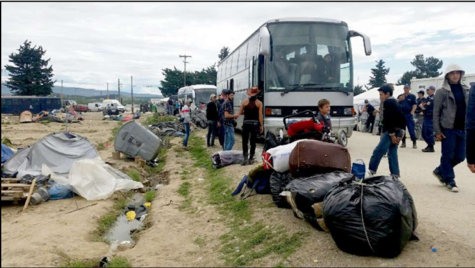
One of the reform’s five priorities is amending the Dublin regulation. The proposal acknowledges that the Dublin Regulation does not lead to sustainable responsibility sharing, it is not effectively enforced (for example, migrants sometimes refuse to apply for asylum in the first country of arrival) and it is not efficient (for example, migrants frequently travel back to the secondary state after they are transferred back to the Member State in which they are supposed to make their asylum claim). The proposal aims to either streamline or supplement the Dublin system with a “corrective fairness mechanism” or by “moving to a system based on a distribution key.” The overall objective is to adapt CEAS to better manage large influxes of asylum seekers and guarantee a higher level of solidarity and responsibility sharing between Member States.
However, changes to CEAS and the Dublin System have been slow over the past three years. Some point at the growing anti-immigrant waves in right-wing, populist Member States. These countries have pursued the tightening of borders and offshoring of asylum responsibilities to third countries. Instead of reforming Dublin, they prefer to focus on keeping asylum seekers outside of European soil.
Another challenge is the asymmetric interdependence that Natascha Zaun, Assistant Professor in Migration Studies at the European Institute of the London Schools of Economics, describes. She notes that, as long as the Visegrad countries (which have low levels of asylum applications) are unwilling to help countries with high numbers of applicants, cooperation is unlikely to happen. In addition, the politicization of the refugee issue since 2015 makes it even less likely that Member States will engage in binding mechanisms any time soon. It seems that CEAS and the Dublin System will remain without significant changes for the time being.
Recent Developments on the Europe-Turkey Border
On Saturday February 29, Turkish president Recep Tayyip Erdogan, announced that he had opened the northern borders of Turkey with Europe (a violation of the 2016 EU-Turkey agreement). The announcement came after 33 Turkish soldiers were killed in air strikes in Idlib province in Syria the previous week. Erdogan had been threatening to open the border for some time in order to pressure European leaders to respond to his demands. He accused Europe of not keeping up their commitments to support Turkey in hosting a population of Syrian refugees that has grown to 3.7 million (in addition to refugees from other countries in the Middle East and Africa). Erdogan has also repeatedly requested support for military interventions in Syria. During a speech on Saturday, Erdogan said, "What did we say? If this continues, we will be forced to open the doors”. Erdogan hopes the refugee influx will push Europe to act.
The European Council president, Charles Michel, spoke to Erdogan on Saturday, expressing his concern for the loss of the 33 soldiers. He also released a statement, noting that "The EU is actively engaged to uphold the EU-Turkey Statement and to support Greece and Bulgaria to protect the EU’s external borders". The EU has insisted that it expects Turkey to uphold the EU-Turkey agreement.
As thousands of people gathered at the Turkish border with Greece, the Greek government sent major military forces to the area. Greece also announced that it will suspend asylum for one month and deport any migrants entering illegally. These moves are not allowed under European Law or the 1951 Convention. The Greek government said it would request an exception to the law from the EU. According to the United Nations some 15,000 people, including families and children, were moving towards the Turkish border with Greece. Riot police used tear gas, batons, shields, and masks to block entry into the country.
Meanwhile, the situation for refugees and migrants is dire. Thousands are stuck along the border, enduring freezing cold temperatures, illness and hunger. While some refugees and migrants were newly arrived in Turkey, others had been in the country for years, trying unsuccessfully to find work, education for their children, and housing. A young boy died after a boat capsized off the Greek island of Lesbos on Monday, March 2. Two Turkish security forces also reported that a Syrian migrant had died from injuries perpetrated by Greek security forces attempting to impede his entry. The Greek government called the allegations "fake news".
The UNHCR released a statement on March 2, calling for "calm and an easing of tensions on Turkey’s borders with the European Union" as well as requesting that authorities avoid any measures that could increase the suffering of vulnerable people. The statement also noted that Greece and other peripheral European countries should not be left alone in the current situation, and that international support to Turkey and neighbouring countries "must be sustained and stepped up." The UNHCR and other agencies are monitoring the situation as well as delivering humanitarian aid such as food and blankets.
*Last updated on March 3 2020, at GMT -5 hours.
Sharing Permissions
|
|
When re-using this resource, please attribute as follows: developed by Susanne Beilmann (The School of Public Policy and Global Affairs ) at the University of British Columbia.
